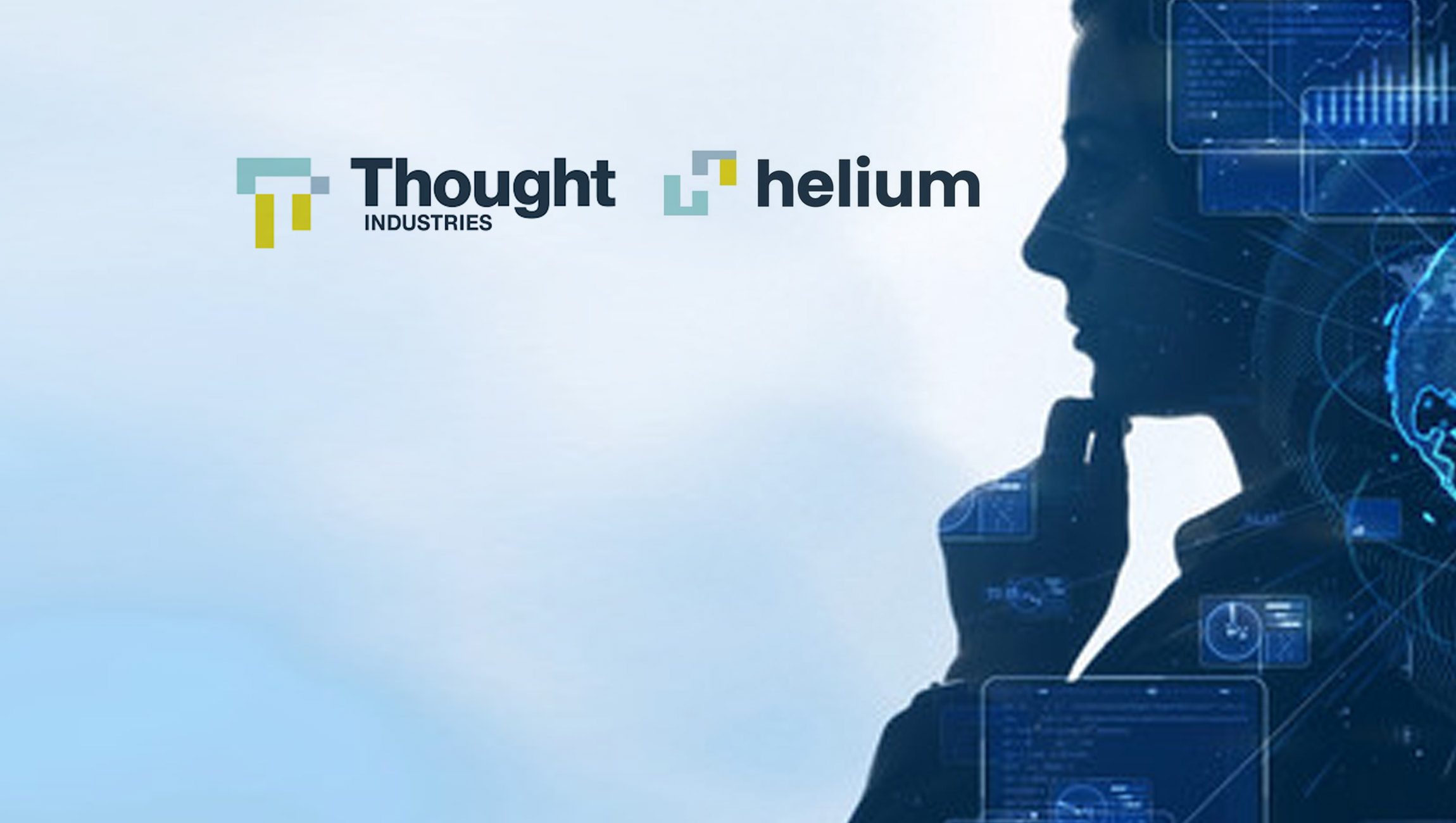Thought Industries, the leading enterprise learning platform for customer, partner and professional training, today announced the latest version of the Ti Enterprise Learning Cloud featuring HELIUM, the industry’s first headless architecture for learning management systems.
HELIUM software, available immediately, enables Ti customers to build and deploy virtually any type of learning experience with zero limits on content, scale, or user interface. Customer and professional learning teams in collaboration with designers or developers, can now fully realize the learning vision that best meets the goals of their organization without limitation, or compromise.
Marketing Technology News: MarTech Interview With Jorge Poyatos, Co-founder at Seedtag
As a ‘headless’ solution, HELIUM is foundational to addressing new content types and the widest variety of user interfaces, including web browsers, smartphones, car screens, home entertainment interfaces, industrial product interfaces, wearables, and virtual or augmented reality headsets and other hardware.
“At Thought Industries, we believe the future of learning is highly contextual, dynamic and personalized, and able to be consumed anywhere and anytime without boundaries,” said Barry Kelly, Thought Industries Co-Founder and CEO. “Beginning today, with the delivery of HELIUM, Thought Industries is setting a new bar in the LMS industry by redefining the meaning and definition of customization and extensibility.”
“HELIUM dovetails nicely into the high-touch service approach we take with our customers. Our product team is excited about leveraging HELIUM to bring a manageable level of customization to customer learning academies,” said Zack Parnell, CEO of Industrial Training International. “We are also excited about what HELIUM enables in terms of increased adoption of XR learning experiences. We will have less friction in creating Learning Paths with XR assignments, with experiences launched natively on devices like VR headsets. And will be able to have better development tools to create and display experiential learner data inside of Thought Industries for managers and learners.”
‘Headless’ software architecture, which separates the technologies used in the front-end presentation layer (the web page or screen) from back-end services and dynamic logic, is a relatively new approach to developing applications that has been slow to penetrate the learning systems market. In contrast, traditional LMS platforms rely on a monolithic architecture and, as such, dictate a front-end user experience that’s static, with little to no flexibility to create and define the end user experience, or the channels of delivery.
“When we use the term headless with respect to our platform – the Thought Industries Enterprise Learning Cloud – what we mean is that we’ve separated out the front-end from the back-end and provided customers with full control over defining what the head of the application should look like and on what platforms it should be delivered and consumed on,” said Todd Boes, Thought Industries Chief Product Officer. “Headless will undoubtedly open up new opportunities, new ideas and new ways of thinking around learning.”
Marketing Technology News: Top 7 B2B Marketing Trends: What B2B Marketers Need to Focus On
At the heart of HELIUM is a developer platform and a software framework, which utilizes the popular MIT open-source license. The developer platform and framework is what enables customization and extension of the Ti Enterprise Learning Cloud.
There are two main areas that makeup the developer platform and the HELIUM Framework:
- Components – Components provide the visual aspect of the framework and represent the current widgets that Ti customers use today – the catalog, learner access, dashboard, cart, recommended content. These are the learner-facing components that comprise the web site and the user interface elements that end users interact and engage with on their learning site – they are what defines the learner experience visually and interactively.
- Developer Tools – A developer platform wouldn’t be complete without a development environment and supportive developer tooling. When Ti customers install HELIUM, they’ll immediately notice that a local development server and build tool is included with a supporting command line interface for managing deployments to the Ti Enterprise Learning Cloud sandbox and production environments.
In creating the HELIUM framework, Thought Industries took the opportunity to completely modernize their platform technology stack featuring:
- GraphQL, the core technology for supporting headless use cases where the need to have full control over the presentation and learner experience is required using any front-end framework on any platform.
- React, a popular JavaScript framework that powers HELIUM learner-facing components.
- Tailwind, which complements React as a utility-first CSS styling and design framework.
- MDX technology, which combines the power of Markdown content with React components providing full control over creating content-based experiences.











